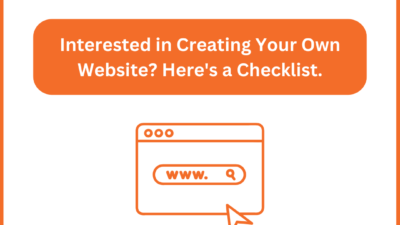Influencer marketing has become a powerhouse for brands seeking to reach their target audience more effectively. Through this approach brands collaborate with influential figures on social media to promote products and services. This dynamic form of marketing has not only reshaped advertising but also significantly impacted web design. Here’s a deep dive into how influencer marketing is transforming web design practices.
1. Enhanced Focus on Aesthetic Appeal
Influencer marketing thrives on visual appeal. Influencers often curate highly aesthetic content to engage their followers. This trend has influenced web design by encouraging designers to prioritize visually appealing elements. Websites are now being crafted with a keen eye for high-quality images, cohesive color schemes, and stylish layouts that can capture and hold the attention of visitors, similar to the allure of a well-curated social media feed.
2. User centric and Responsive Design
Influencers understand their audience’s preferences and behaviors intimately. This understanding has driven web designers to adopt a more user-centric approach. Influencers primarily operate on social media, where their audiences engage via a variety of devices, particularly mobile phones. Consequently, when these influencers direct traffic to a website, it’s crucial for the site to offer a responsive design that adapts to different screen sizes and resolutions. This ensures that visitors have a consistent and engaging experience regardless of the device they use, which is essential for maintaining the trust and interest cultivated by influencers. A well-executed website design package can enhance mobile accessibility and usability and boost user satisfaction.
3. Incorporation of Authentic Content
Authenticity is a cornerstone of influencer marketing. Followers trust influencers for their genuine opinions and relatable content. This authenticity is being mirrored in web design through the integration of user-generated content (UGC). Testimonials, reviews, and real-life product photos shared by influencers and customers are increasingly featured on websites, providing social proof and building trust with potential customers. This shift towards authentic content makes websites feel more relatable and credible.
4. Interactive and Engaging Elements
Engagement is key in influencer marketing, and this principle is being applied to web design as well. Interactive elements such as quizzes, polls, and clickable infographics are being incorporated into websites to increase user engagement. These elements not only make the browsing experience more enjoyable but also encourage users to spend more time on the site, reducing bounce rates and improving overall user experience.
5. Seamless Social Media Integration
Given that influencer marketing is predominantly conducted on social media platforms, web designers are prioritizing seamless integration with these platforms. Features like social media buttons, embedded feeds, and easy sharing options are now standard. This integration allows users to effortlessly transition between a brand’s website and its social media profiles, enhancing the overall user experience and fostering a more connected brand presence.
6. Personalized User Experiences
Influencers often provide personalized recommendations to their followers, creating a sense of individual attention. Web design is following suit by offering personalized user experiences. Through the use of data analytics and AI, websites can now offer personalized content, product recommendations, and even tailored landing pages based on user behavior and preferences. This personalization not only enhances the user experience but also increases conversion rates.
7. Storytelling Through Design
Storytelling is a powerful tool in influencer marketing, and web design is harnessing this power. Designers are now creating narrative-driven websites that guide users through a brand’s story, mission, and values. By using elements such as immersive visuals, compelling copy, and interactive features, websites can engage users on a deeper level, much like how influencers engage their audience through personal stories and experiences.
The impact of influencer marketing on web design is undeniable. Furthermore, the power of influencers on branding enables established businesses to reach and engage their audiences, enhancing the efforts of web design. By focusing on influencer marketing, web designers can create websites that not only look good but also resonate with users and drive meaningful engagement. In this way, the principles of influencer marketing are not just transforming advertising but are also reshaping the very fabric of web design.











